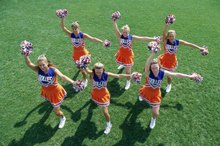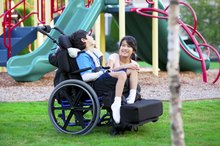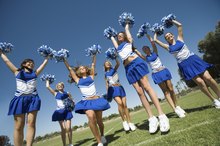Appropriate Goals for Children With Behavioral Problems
It is the responsibility of a special education student’s treatment team to develop appropriate academic and behavior goals for the student’s Individualized Education Plan, otherwise known as an IEP. Within the IEP is the Behavior Intervention Plan, which is referred to as the BIP 1. The BIP addresses specific behavioral issues. Goals are highly personalized to meet the needs of the student. Team members must clearly identify problem behaviors along with positive replacement behaviors in order to create an effective behavioral goal.
Inappropriate Peer Interactions
Many students with BIPs exhibit poor interactions with peers. They may engage in name-calling, physical aggression and other anti-social behaviors. Set a measurable goal that specifically addresses the problem and gives the student an alternative. For example, “Isabella will name-call less than one time per 90-minute observation period.” Add an alternative to the behavior, along with a positive reinforcement, such as “Isabella will say ‘thank you’ when a peer assists her with a task and will receive a smile sticker on her point sheet.” BIP plans should focus on rewards rather than consequences.
- Many students with BIPs exhibit poor interactions with peers.
- BIP plans should focus on rewards rather than consequences.
Acting Out In Class
Behavioral Modification Summer Camps for Teens in Texas
Learn More
When behaviorally disturbed students act out in class, it disrupts everyone’s learning. Goals for this behavior, like all BIP goals, must be clear and measurable. For example, “Luca will engage in desk banging no more than one time per class period.” Provide the behavioral alternative using a skill the student already has, advises the Maine Parent Federation. “Luca will use a stress ball when he feels frustrated during class.” Give positive reinforcement. “Luca will accumulate 5 minutes time to engage in a free-choice activity for each class period that he chooses to use the stress ball.”
- When behaviorally disturbed students act out in class, it disrupts everyone’s learning.
- Luca will use a stress ball when he feels frustrated during class.”
Off-Task Behavior
Some behaviors are not disruptive or harmful to others. However, they can prevent the child with behavioral problems from learning effectively. Off-task behavior is an example of this, as a child who is staring off into space or drawing pictures on a test is a child who is not engaged in learning. An example of a goal for off-task behavior is “Victoria will sharpen her pencil no more than one time per class period.” A positive alternative to this behavior is “Victoria will use the extra pencil on her desk when a pencil lead breaks.” A positive reinforce for this behavior is to allow Victoria to do errands for the teacher when she meets the behavior goal, as this particular off-task behavior is likely motivated by a need to physically move her body.
- Some behaviors are not disruptive or harmful to others.
- A positive reinforce for this behavior is to allow Victoria to do errands for the teacher when she meets the behavior goal, as this particular off-task behavior is likely motivated by a need to physically move her body.
Transitions
Middle Childhood Physical Development Activities
Learn More
Many behavioral problems make an appearance during transitions. A student may need a BIP goal to help him make the transition from class to lunch, from one activity within the classroom to another or to successfully transition between classes. An example of a measurable transition goal is “Cole will enter the classroom on time nine times out of 10.” A positive alternative to being late might be to get to walk to class with a peer mentor. Teachers and parents can positively reinforce this behavior by giving Cole verbal positive feedback for being on time to class.
- Many behavioral problems make an appearance during transitions.
- Teachers and parents can positively reinforce this behavior by giving Cole verbal positive feedback for being on time to class.
Related Articles
References
Writer Bio
Elise Wile has been a writer since 2003. Holding a master's degree in curriculum and Instruction, she has written training materials for three school districts. Her expertise includes mentoring, serving at-risk students and corporate training.









